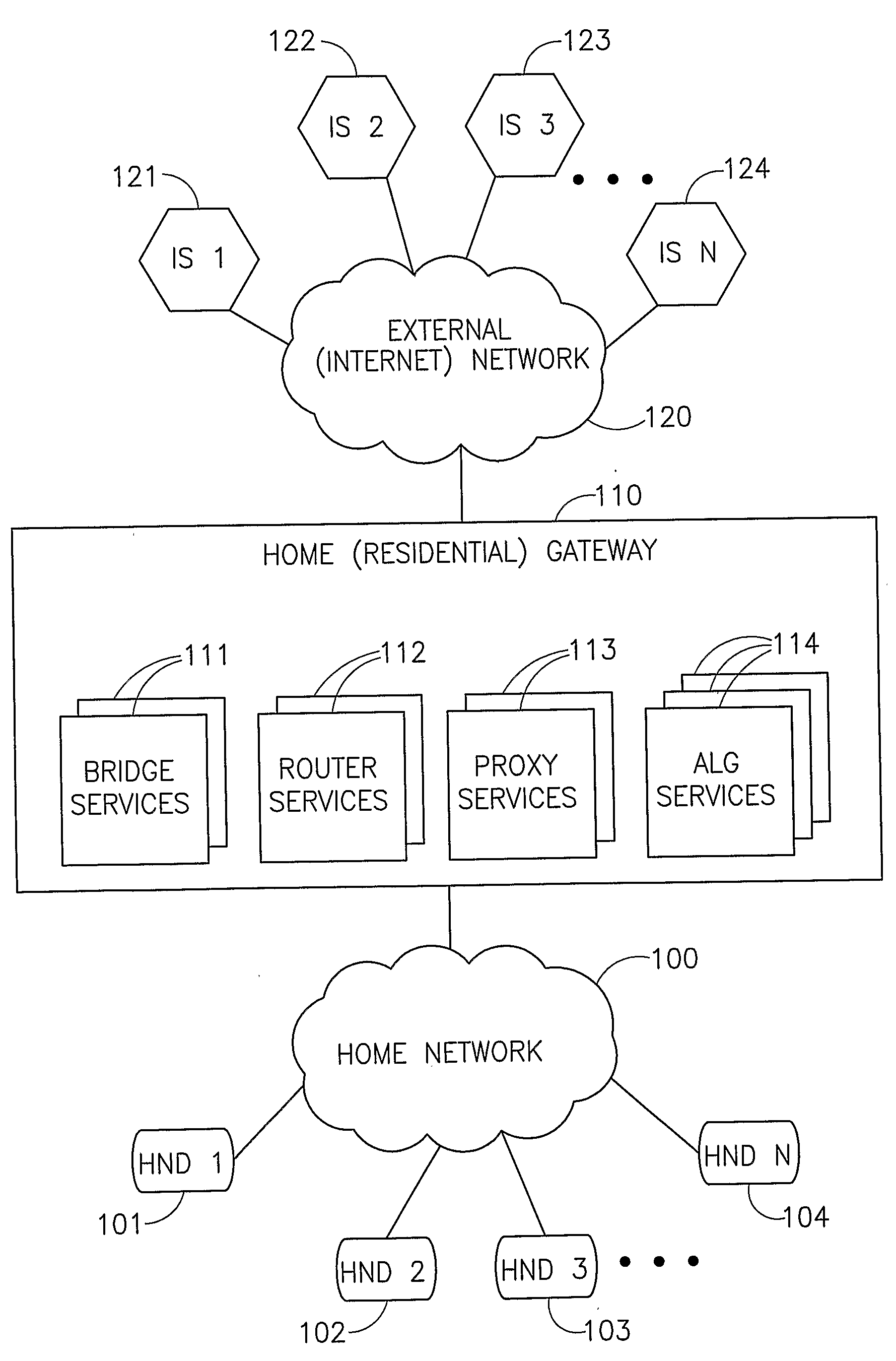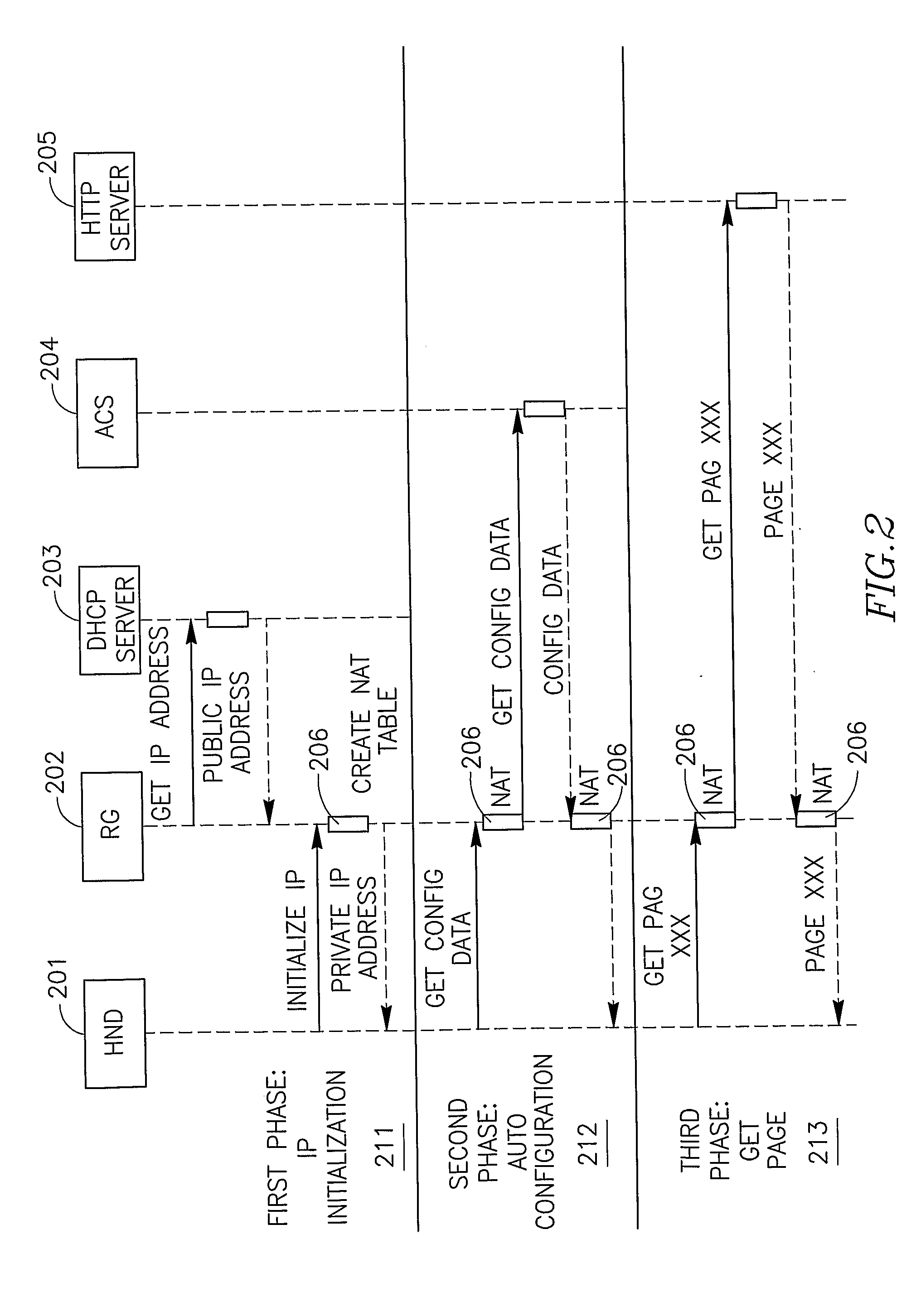Architecture of Gateway Between a Home Network and an External Network
a gateway and home network technology, applied in the field of services, can solve the problems of not providing flexibility to create new services, affecting the service creation and service actualization of other services,
- Summary
- Abstract
- Description
- Claims
- Application Information
AI Technical Summary
Benefits of technology
Problems solved by technology
Method used
Image
Examples
examples
[0100]Voice Call with Video of other party on TV screen.[0101]This service involves the setup in parallel of a Voice and Video Call over IP using the VoIP HAPI. Then the Video has to be relayed to the Set Top Box for display on TV. The Video relay to TV can be performed using a traffic diversion HAPI that sends traffic stream to one HND instead of another.
[0102]3.2 Expanded Class 1 HAPI
The Expanded Class 1 HAPI Class allows breakpoint in the service implementation sequence so that the HND can take different actions in different situations. For example:
[0103]3.3 Expanded Content Retrieval Service[0104]HND looks for specific contents (a web page, a document, a song, any Multimedia etc.).[0105]The HGW provides an HAPI with the details of the contents (as they are known to the user in “human Language”[0106]The HGW searches for the contents using search engines and presents the first response with separate display of other results.
In this example the HGW activates several building blocks...
PUM
 Login to View More
Login to View More Abstract
Description
Claims
Application Information
 Login to View More
Login to View More - R&D
- Intellectual Property
- Life Sciences
- Materials
- Tech Scout
- Unparalleled Data Quality
- Higher Quality Content
- 60% Fewer Hallucinations
Browse by: Latest US Patents, China's latest patents, Technical Efficacy Thesaurus, Application Domain, Technology Topic, Popular Technical Reports.
© 2025 PatSnap. All rights reserved.Legal|Privacy policy|Modern Slavery Act Transparency Statement|Sitemap|About US| Contact US: help@patsnap.com



